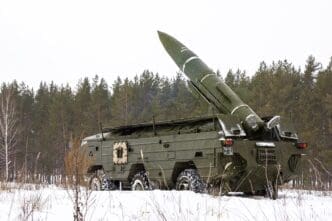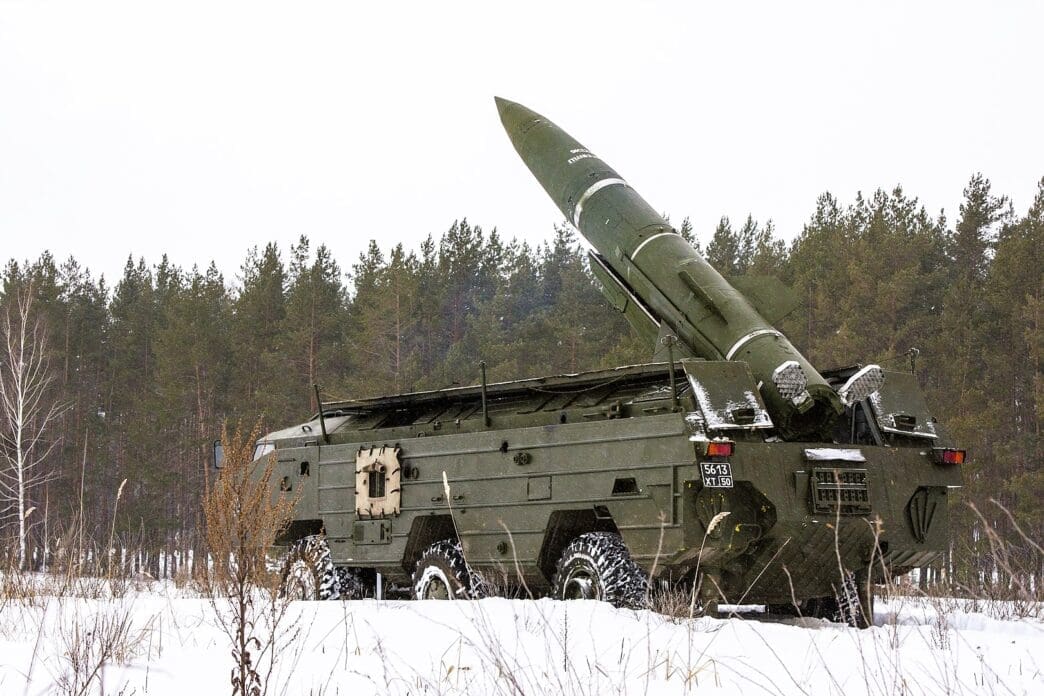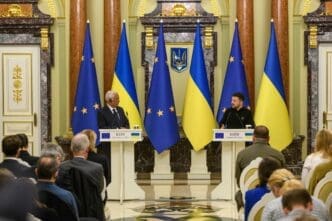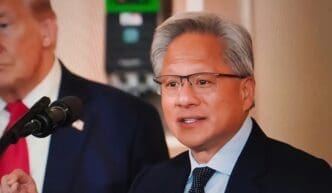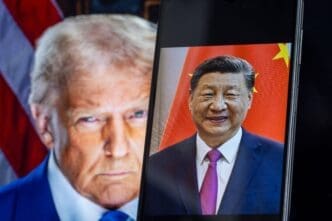INTERNATIONAL REPORT – As of early 2025, the world’s nine nuclear-armed states collectively possess an estimated 12,241 nuclear warheads, a figure that represents a stark reduction from the peak of the Cold War. However, a comprehensive analysis of the global nuclear landscape reveals a troubling shift: the long-standing trend of disarmament has significantly slowed, giving way to a new era characterized by modernization and expansion in several key countries, fueling concerns of a burgeoning arms race.
While the sheer number of nuclear weapons globally has decreased since their Cold War zenith, the pace of this reduction has visibly decelerated. More critically, the estimated number of warheads held in global military stockpiles, ready for deployment, is once again on an upward trajectory, signaling a strategic recalculation by several nations.
The Current Global Nuclear Inventory
Leading the charge in this nuclear inventory are Russia and the United States, who collectively account for approximately 87% of the world’s total nuclear weapons. Russia is estimated to hold 5,580 warheads, while the United States possesses around 5,044. Both global powers are not merely maintaining their arsenals; they are actively engaged in extensive modernization programs to enhance the capabilities of their nuclear forces.
A particularly significant and concerning development is the rapid growth of China’s nuclear arsenal. Experts estimate that Beijing’s stockpile has been increasing by approximately 100 new warheads each year since 2023, bringing its total to an estimated 500. This swift expansion is seen by some analysts as a primary driver behind what they describe as a “dangerous new nuclear arms race.” Beyond these major players, other nations are also believed to be actively increasing their stockpiles, including India with an estimated 180 warheads, Pakistan with 170, and North Korea with around 50. France holds 290, the United Kingdom 225, and Israel is estimated to possess 90 warheads.
It is crucial to acknowledge that these figures are based on estimates derived from various intelligence assessments and open-source data, as the exact numbers are not officially confirmed by all nuclear-armed countries, adding a layer of opacity to the global inventory.
The landscape of nuclear powers is also defined by international treaties. The five permanent members of the United Nations Security Council—the United States, Russia, China, France, and the United Kingdom—are all recognized as nuclear-weapon states under the Nuclear Non-Proliferation Treaty (NPT). This treaty aims to prevent the spread of nuclear weapons and promote disarmament. However, India, Pakistan, North Korea, and Israel have developed nuclear weapons outside of the NPT’s framework, adding complexity to global non-proliferation efforts.
Understanding the Power: How Nuclear Weapons Work
To grasp the magnitude of the threat posed by these arsenals, it’s essential to understand the underlying science of nuclear weapons. These incredibly powerful devices release a massive amount of energy by manipulating atomic nuclei, primarily through two distinct processes: nuclear fission and nuclear fusion.
Fission (Atomic Bombs)
Fission is the process of splitting a large atomic nucleus into smaller ones. This is the principle behind what are commonly known as atomic bombs.
- Fuel: Fission weapons typically utilize specific isotopes of uranium (U-235) or plutonium (Pu-239) as their primary fuel. These materials are inherently “fissile,” meaning their nuclei can be split when struck by a neutron.
- Critical Mass: To initiate and sustain the explosive chain reaction, a precise quantity of this fissile material is required, known as the critical mass. This is the minimum amount necessary to ensure that enough neutrons produced by fission go on to cause further fissions, rather than escaping or being absorbed.
- Chain Reaction: The process begins when a stray neutron or an injected neutron strikes a uranium or plutonium nucleus, causing it to split. This splitting releases an enormous amount of energy, along with additional neutrons. These newly liberated neutrons then rapidly collide with other nearby fissile nuclei, causing them to split as well, thereby creating a rapidly escalating and self-sustaining chain reaction.
- Detonation: In a modern fission weapon, conventional high explosives are strategically arranged around a sub-critical mass of fissile material. When detonated, these explosives compress the fissile material inward, increasing its density. This compression forces the material into a supercritical state, instantly initiating the uncontrolled nuclear chain reaction and leading to a massive explosion.
Fusion (Thermonuclear or Hydrogen Bombs)
Fusion, conversely, is the process of combining two lighter atomic nuclei to form a heavier one. This is the same powerful reaction that fuels the sun and stars, and it’s harnessed in the most devastating nuclear weapons, often called thermonuclear or hydrogen bombs.
- Fission First (The Trigger): A fusion bomb cannot initiate its reaction on its own. It requires an extremely high temperature and pressure environment, which is provided by a smaller fission bomb acting as a primary trigger. The intense energy from this initial fission explosion is crucial to get the fusion reaction started.
- Fusion Fuel: The primary fuel for the fusion reaction typically consists of isotopes of hydrogen, specifically deuterium and tritium.
- The “Boost”: In some advanced designs, a small amount of fusion material is integrated directly into the core of the primary fission device. When the fission reaction begins, the intense heat and pressure cause this fusion material to ignite. This fusion reaction, in turn, releases a large number of high-energy neutrons, which then “boost” the efficiency of the primary fission chain reaction, significantly increasing the overall explosive yield of the weapon.
- Layered Design (Teller-Ulam Configuration): The most powerful thermonuclear weapons employ a more complex, multi-stage design. The initial fission explosion generates a burst of X-rays. These X-rays are then channeled to heat and compress a separate secondary stage containing fusion fuel. This immense heating and compression cause the fusion fuel to ignite, releasing even more energy. This entire process can be further amplified by surrounding the fusion fuel with a layer of depleted uranium, which undergoes additional fission when struck by the high-energy neutrons from the fusion reaction, contributing to more than half of the weapon’s total explosive yield.
The energy released in any nuclear explosion, whether fission or fusion-based, is immense, instantly creating a fireball with temperatures reaching tens of millions of degrees Celsius. The immediate and subsequent effects, including a massive blast wave, intense thermal radiation, and widespread radioactive fallout, have devastating and long-lasting consequences for human life and the environment.
Geopolitical Climate and Heightened Concerns
The current geopolitical climate further exacerbates these concerns. Ongoing conflicts, such as the war in Ukraine, and persistent tensions in volatile regions like the Middle East, have heightened anxieties about the potential for nuclear weapons use. Experts universally emphasize the catastrophic and unimaginable humanitarian consequences that would result from the detonation of even a single nuclear warhead, which has the potential to kill hundreds of thousands of people and trigger widespread environmental devastation. The renewed focus on expanding and modernizing these arsenals, coupled with a more detailed understanding of their destructive power, serves as a grim reminder of the ever-present threat of nuclear conflict in an increasingly complex world.

